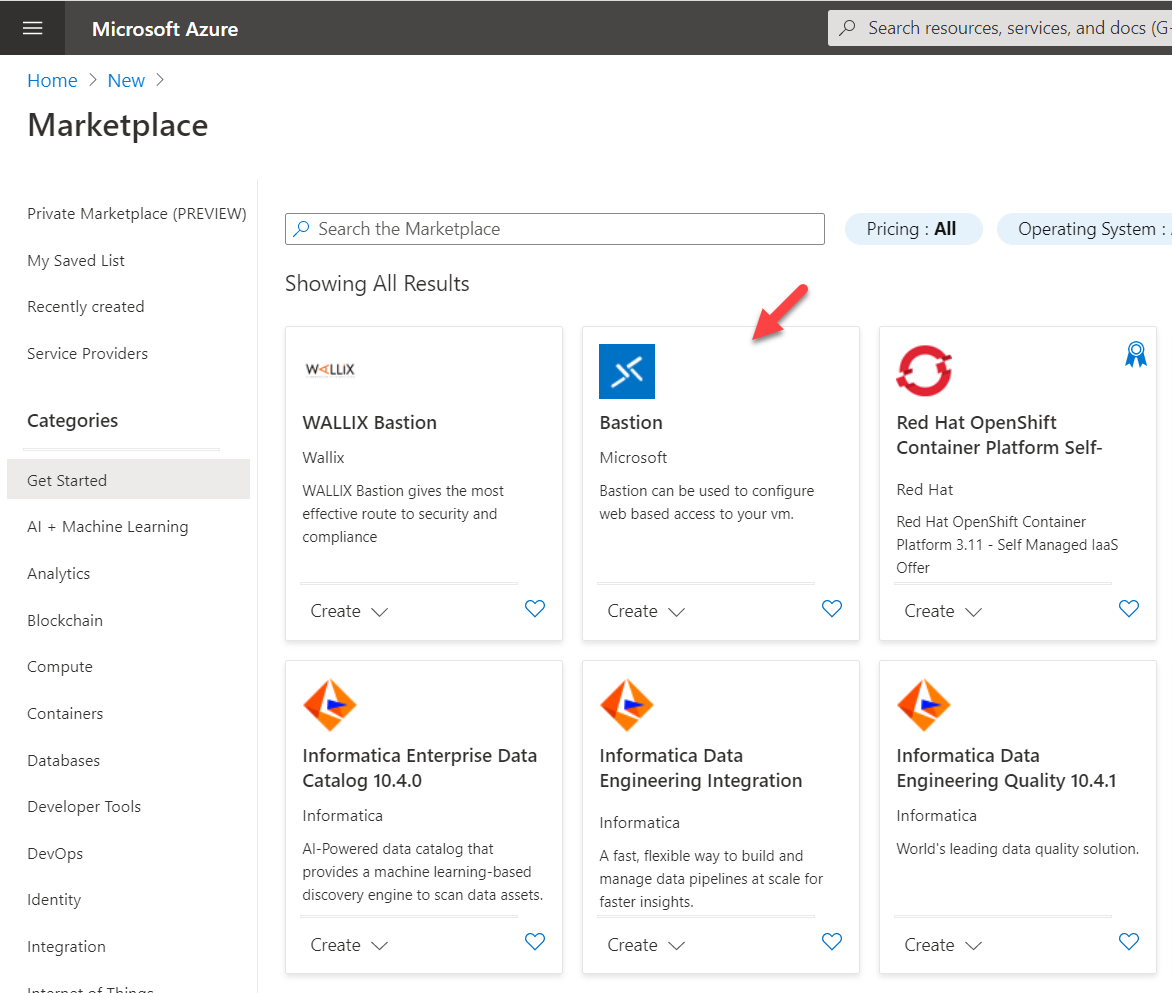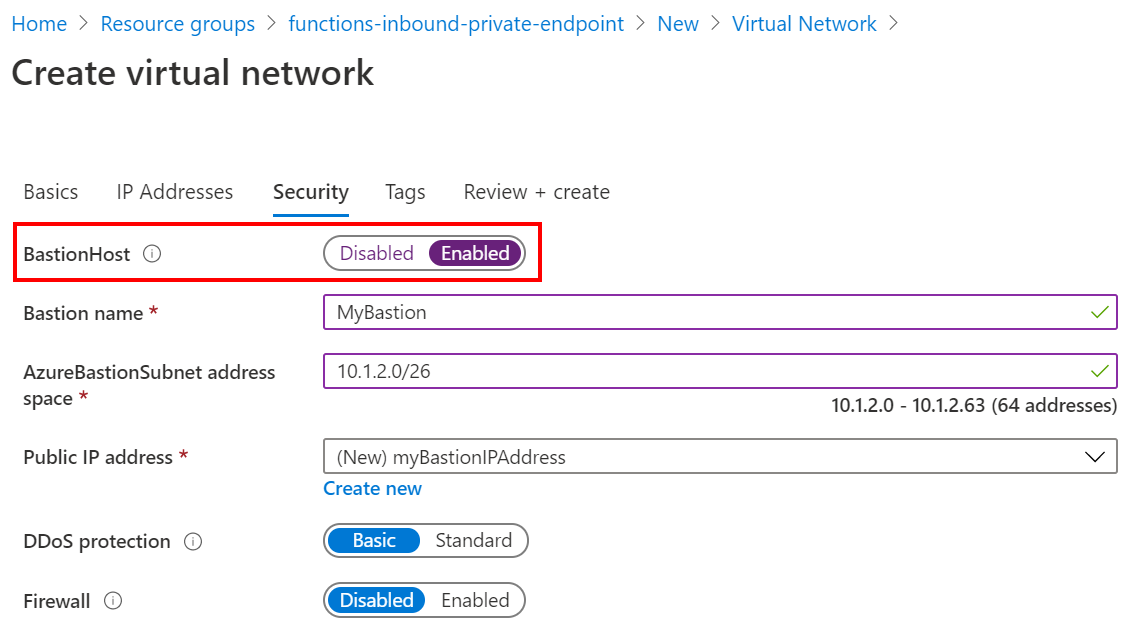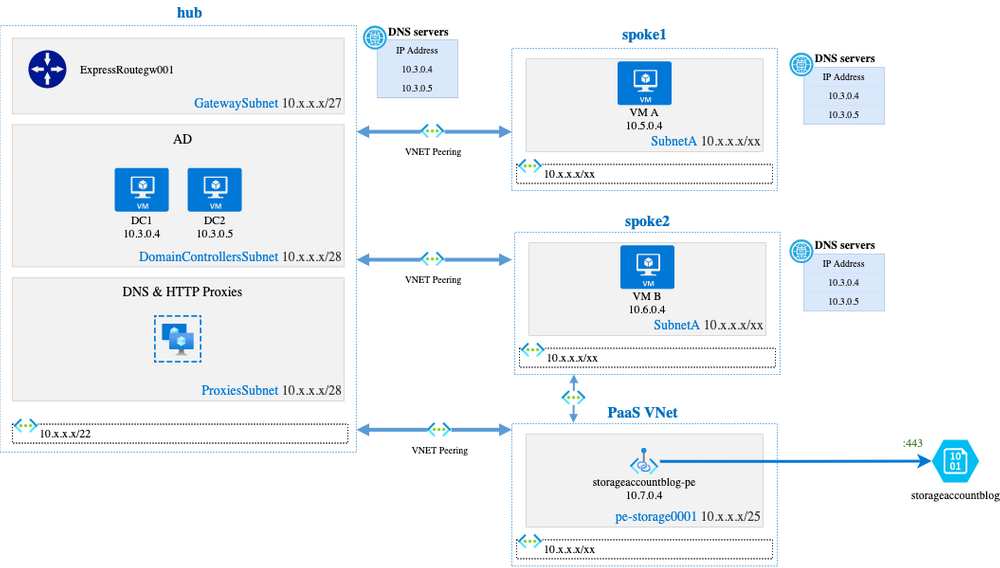

- #Azure bastion private endpoint for free#
- #Azure bastion private endpoint how to#
- #Azure bastion private endpoint download#
Your key file is downloaded as myKey.pem.
#Azure bastion private endpoint download#
When the Generate new key pair window opens, select Download private key and create resource. Select Manage subnet configuration to create a new subnet for the server.Īdd a new subnet for the virtual machine.Īfter the subnet has been created successfully, close the page. For the virtual network, choose the vnetenvironment1 created for the database server. Select Networking page to configure the virtual network. Under Inbound port rules > Public inbound ports, choose Allow selected ports and then select SSH (22) and HTTP (80) from the drop-down. Under Administrator account, select SSH public key.įor SSH public key source, leave the default of Generate new key pair, and then type myKey for the Key pair name. Under Instance details, type myVM for the Virtual machine name, choose the same Region as your database server.

In the Basics tab, under Project details, make sure the correct subscription is selected and then choose to Create new resource group. Go to your resource group in which the server was created. The Linux virtual machine can be used as SSH tunnel to manage your database server.

The virtual machine must be created in the same region and same subscription. To connect and manage the server, let's create a Linux virtual machine.

Since the server is in a virtual network, you can only connect to the server from other Azure services in the same virtual network as the server. Select Go to resource to view the server's Overview page opens. Wait until the deployment is complete and successful. Select Review + create to review your flexible server configuration. Select OK once you've provided the virtual network name and subnet information. Select Create virtual network to create a new virtual network vnetenvironment1. Go to the Networking tab, select private access.You can't change the connectivity method after you create the server. You can change the configuration.įor faster data loads during migration, increasing the IOPS to the maximum size supported by computing the size and later scaling it back to save cost is recommended. With the default values, this provisions a MySQL server of version 5.7 with Burstable Sku using 1 vCore, 2 GiB Memory, and 32 GiB storage. On the Basics tab, enter the subscription, resource group, region, administrator username and administrator password. On the Select Azure Database for MySQL deployment option page, select Flexible server as the deployment option: Search for and select Azure Database for MySQL servers in the portal: You create the server within an Azure resource group.Ĭomplete these steps to create a flexible server: You create a flexible server with a defined set of compute and storage resources. Create an Azure Database for MySQL - Flexible Server The default view is your service dashboard. Enter your credentials to sign in to the portal. For more information, see Try Flexible Server for free.
#Azure bastion private endpoint for free#
With an Azure free account, you can now try Azure Database for MySQL - Flexible Server for free for 12 months. If you don't have an Azure subscription, create an Azure free account before you begin.
#Azure bastion private endpoint how to#
This quickstart shows you how to create a flexible server in a virtual network by using the Azure portal. Azure Database for MySQL - Flexible Server is a managed service that runs, manages, and scales highly available MySQL servers in the cloud.


 0 kommentar(er)
0 kommentar(er)
